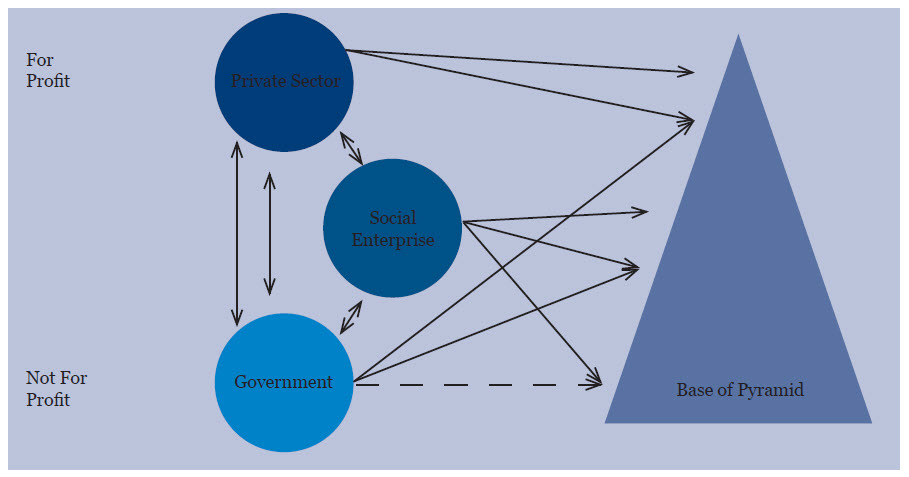In 2015 the international community agreed on a set of ambitious sustainable development goals (SDGs) for the global society, to be achieved by 2030. One of the lessons that the implementation of the Millennium Development Goals (MDG s) has highlighted is the importance of a systematic approach to identify and sequence development interventions—policies, programs, and projects—to achieve such goals at a meaningful scale. The Chinese approach to development, which consists of identifying a problem and long-term goal, testing alternative solutions, and then implementing those that are promising in a sustained manner, learning and adapting as one proceeds—Deng Xiaoping’s “crossing the river by feeling the stones”—is an approach that holds promise for successful achievement of the SDGs.
Having observed the Chinese way, then World Bank Group President James Wolfensohn in 2004, together with the Chinese government, convened a major international conference in Shanghai on scaling up successful development interventions, and in 2005 the World Bank Group (WBG ) published the results of the conference, including an assessment of the Chinese approach. (Moreno-Dodson 2005). Some ten years later, the WBG once again is addressing the question of how to support scaling up of successful development interventions, at a time when the challenge and opportunity of scaling up have become a widely recognized issue for many development institutions and experts.
Since traditional private and public service providers frequently do not reach the poorest people in developing countries, social enterprises can play an important role in providing key services to those at the “base of the pyramid.”
In parallel with the recognition that scaling up matters, the development community is now also focusing on social enterprises (SEs), a new set of actors falling between the traditionally recognized public and private sectors. We adopt here the World Bank’s definition of “social enterprises” as a social-mission-led organization that provides sustainable services to Base of the Pyramid (BoP) populations. This is broadly in line with other existing definitions for the sector and reflects the World Bank’s primary interest in social enterprises as a mechanism for supporting service delivery for the poor. Although social enterprises can adopt various organizational forms—business, nongovernmental organizations (NGOs), and community-based organizations are all forms commonly adopted by social enterprises—they differ from private providers principally by combining three features: operating with a social purpose, adhering to business principles, and aiming for financial sustainability. Since traditional private and public service providers frequently do not reach the poorest people in developing countries, social enterprises can play an important role in providing key services to those at the “base of the pyramid.” (Figure 1)
Figure 1. Role of SE sector in public service provision

Social enterprises often start at the initiative of a visionary entrepreneur who sees a significant social need, whether in education, health, sanitation, or microfinance, and who responds by developing an innovative way to address the perceived need, usually by setting up an NGO, or a for-profit enterprise. Social enterprises and their innovations generally start small. When successful, they face an important challenge: how to expand their operations and innovations to meet the social need at a larger scale.
Development partner organizations—donors, for short—have recognized the contribution that social enterprises can make to find and implement innovative ways to meet the social service needs of people at the base of the pyramid, and they have started to explore how they can support social enterprises in responding to these needs at a meaningful scale.
The purpose of this paper is to present a menu of approaches for addressing the challenge of scaling up social enterprise innovations, based on a review of the literature on scaling up and on social enterprises. The paper does not aim to offer specific recommendations for entrepreneurs or blueprints and guidelines for the development agencies. The range of settings, problems, and solutions is too wide to permit that. Rather, the paper provides an overview of ways to think about and approach the scaling up of social enterprise innovations. Where possible, the paper also refers to specific tools that can be helpful in implementing the proposed approaches.
Note that we talk about scaling up social enterprise innovations, not about social enterprises. This is because it is the innovations and how they are scaled up that matter. An innovation may be scaled up by the social enterprise where it originated, by handoff to a public agency for implementation at a larger scale, or by other private enterprises, small or large.
This paper is structured in three parts: Part I presents a general approach to scaling up development interventions. This helps establish basic definitions and concepts. Part II considers approaches for the scaling up of social enterprise innovations. Part III provides a summary of the main conclusions and lessons from experience. A postscript draws out implications for external aid donors. Examples from actual practice are used to exemplify the approaches and are summarized in Annex boxes.
The Brookings Institution is committed to quality, independence, and impact.
We are supported by a diverse array of funders. In line with our values and policies, each Brookings publication represents the sole views of its author(s).





